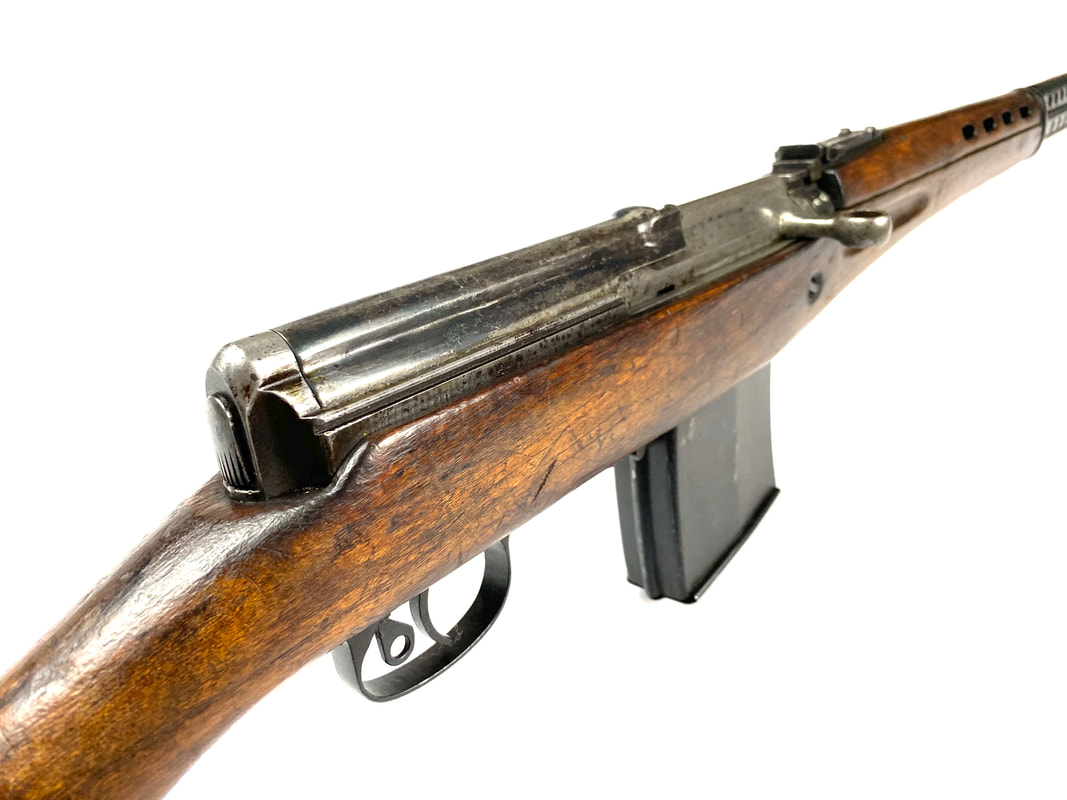The recognition in the West of Soviet contributions to the fight has gone through somewhat of a shift. In the decades following the war they were largely forgotten, glossed over, or confined to set piece battles like Stalingrad, Kursk, Berlin, etc. While perhaps explainable (although wrong) because we found ourselves at extreme odds with the folks behind the Iron Curtain, it has led to a warped understanding of how the war actually happened and certainly doesn't give the USSR a fair stake in the victory.
This particular weapon, a SVT-40 (Tokarev self-loading rifle, model of 1940), was part of the Soviet effort in The Great Patriotic War. While it may have been aimed at Germans at one point, it eventually wound up in the hands of the Finnish military as noted by the boxed SA stamp. In the years leading up to WW2 the Soviet military recognized the need to modernize their military and replace the venerable, but rather old, Mosin Nagant rifle. After some development the USSR settled on the SVT-40 design, and began producing them with the goal of phasing out their 91/30s with a new autoloading design. Featuring a 10rd detachable magazine (still primarily fed via stripper clips), 24.6" barrel, vented metal hand guards and a sweet looking muzzle brake, the SVT-40 is an iconic looking weapon. Despite its length I think it is an extremely graceful and well-balanced weapon, and gave the infantryman holding it a great deal of firepower. Unfortunately the best laid plans are often unexpectedly disrupted, and this happened in 1941 with the German invasion. This forced the Soviets to rely yet again on Mosin Nagant pattern rifles, while SVT-40s found themselves in a secondary role. The Soviets were smart however by keeping the same service cartridge between rifles (unlike the French, Italians, and Japanese) so the use of SVT-40 didn't seriously bog down logistics. It served ably throughout the conflict, but did have its issues including first shot dispersion (making it unsuitable for sniper usage) and fragility when compared to the bomb-proof Mosin. While 1.6 million SVT rifles (38 and 40 pattern) were ultimately produced, they quickly became obsolete post-war due to the rise of the intermediate cartridge and other developments in firearms technology.
0 Comments
Leave a Reply. |
Jon K.Weapons collector, history buff, Army officer, Pug enthusiast. Archives
December 2020
Categories
All
|






 RSS Feed
RSS Feed
